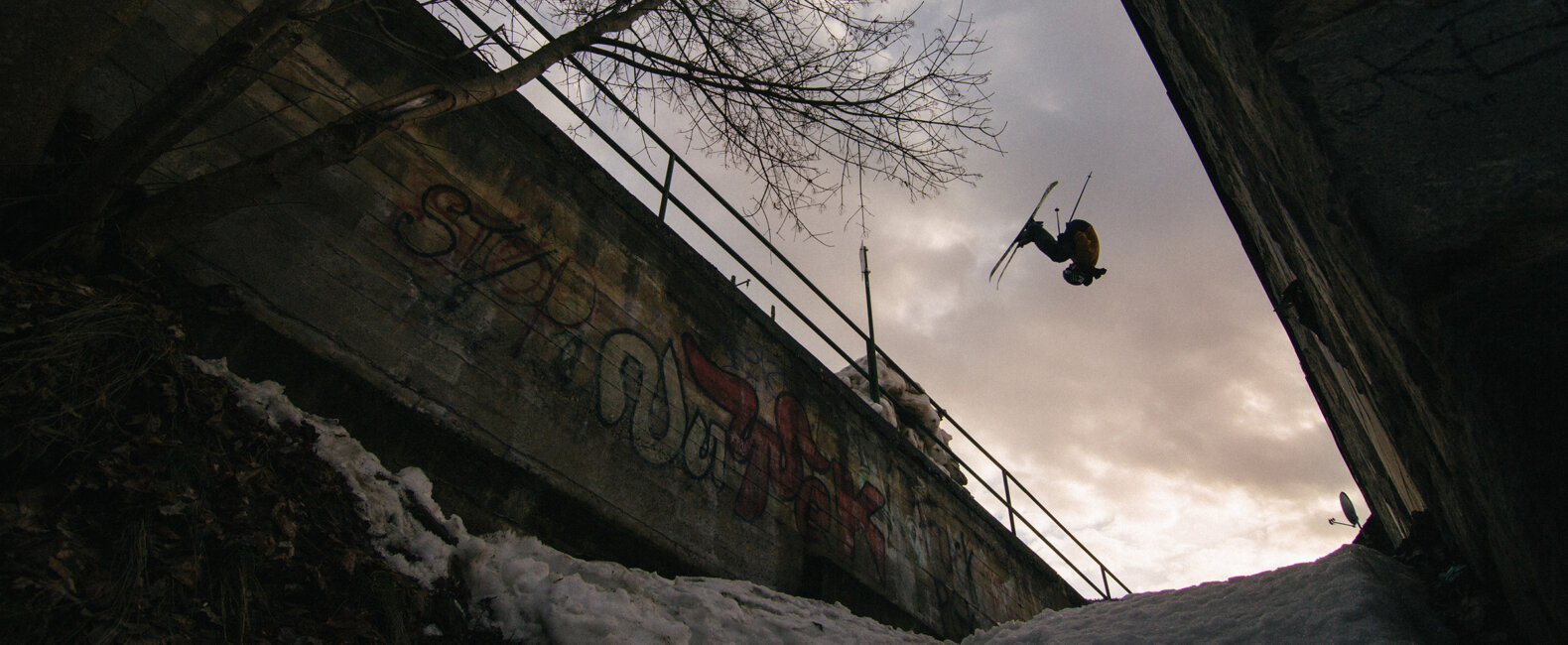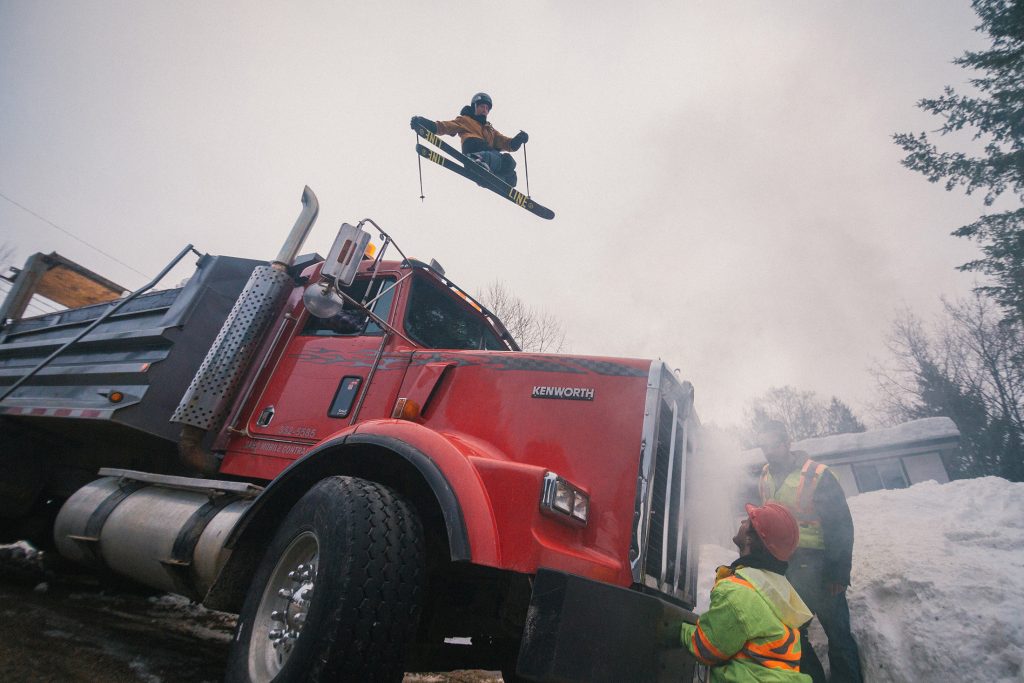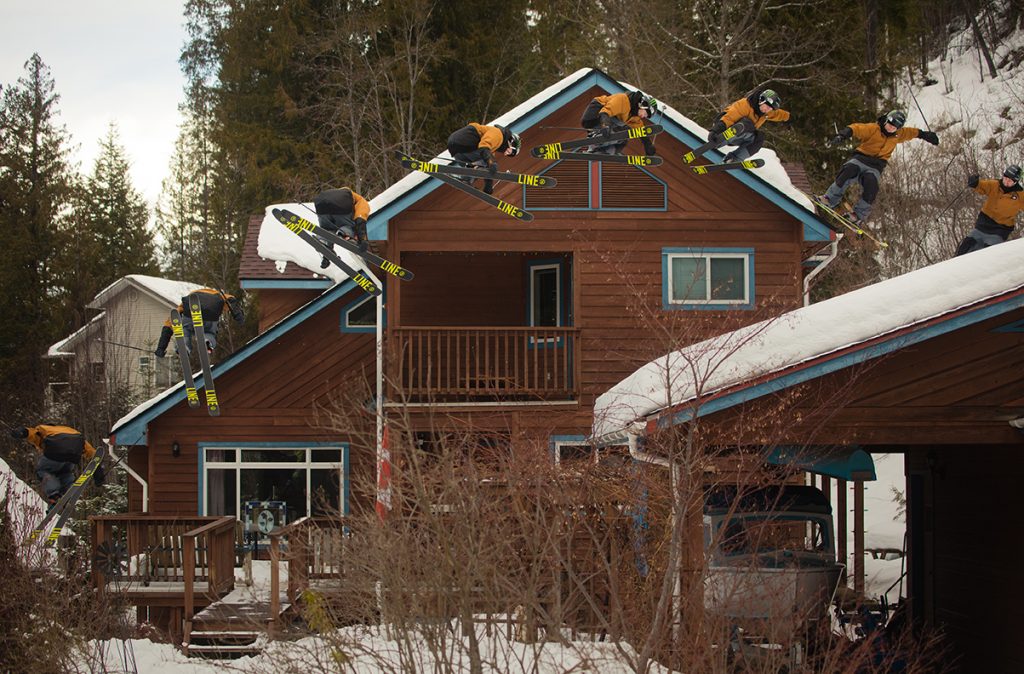There are a lot of action-sports films out there. A lot. Maybe that’s because in extreme sports the drama is baked in. High stakes (failure, injury, death), conflict (man vs. nature, man vs. skate park, man vs. gravity), and dynamic characters (who does this stuff anyway?). But despite all of this, these films often lack the basic element for a lasting effect: relatability. They are awe-inspiring, yes, but don’t connect. Spellbinding, sure, but hard to remember. They are — not always, but often — lightning minus the thunder.
We had the chance to talk to Mitchell Scott, a producer at Sherpas Cinema. For more than a decade, he and his team have been pushing themselves to find and tell extreme stories that are not only visually stunning, but also deeply resonate — and often for reasons that aren’t immediately obvious.
In their recent film, Imagination (a Vimeo Best of the Year pick), a child sits in the backseat of an SUV, imagining a street skier turning his hometown into an extreme-sports playground. And… that’s pretty much it. But it works. It works because it resonates. It resonates because the piece is not only stunning and playful and super fun to watch, it also makes you feel something. “People have shed tears,” Mitchell told us. We wanted to find out how Sherpas Cinema pulled it off.
Here’s producer Mitchell Scott on Imagination.
Musicbed: Imagination’s concept came from an older film, right?
Mitchell: The original segment, from All.I.Can. — which we call the “Kootenay Street Segment” — was shot with a very small crew by Dave Mossop, one of Sherpas Cinema’s founders and directors. The athlete was JP Auclair, who was a very good friend of ours. He tragically passed away in an avalanche a few years ago. But before he died, JP had been jamming with Dave about what it might look like to evolve the idea and maybe have this kid imagine a skier who comes out of nowhere. The idea stuck with us, and last year North Face was kind enough to back it. The original concept was JP’s.
How do you make your films stand out from other action sports pieces? It’s definitely a crowded field.
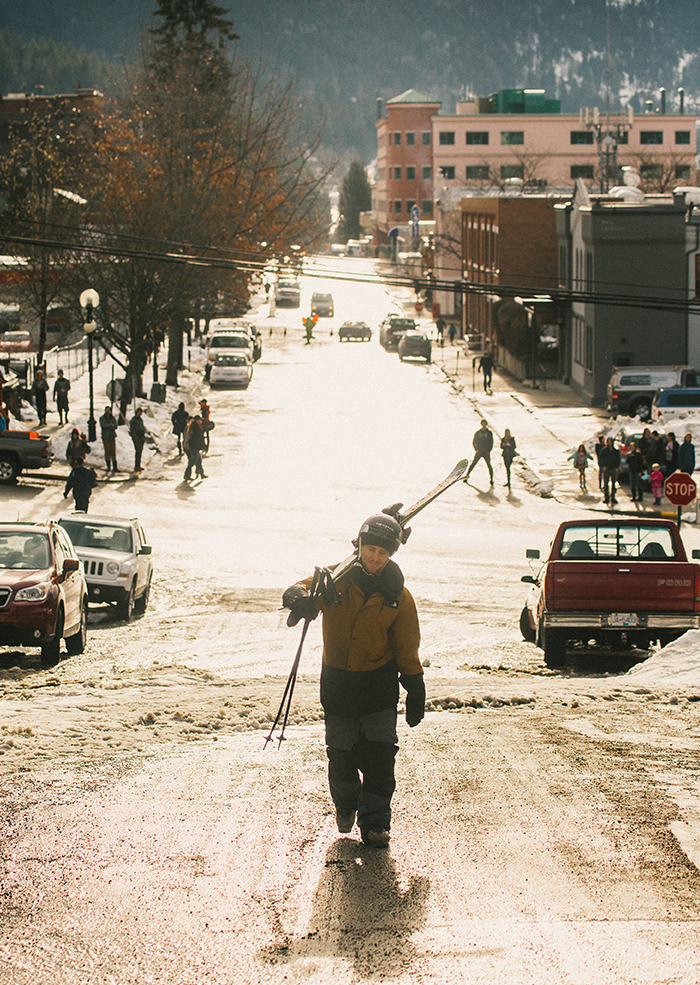
We talk about story a lot. I think when it comes to outdoor cinema, people often try to just slap a story on top of imagery. What we try to do is look for the story that’s in the imagery, in each and every shot. How do we make this shot of a forest the most powerful and compelling shot of a forest ever captured? For us, that really comes down to the details. Sometimes we get so caught up in the details and story of every shot, that we can get distracted from the larger story. But we’re constantly pushing ourselves to look as closely as we can at the details within our frames. I think Imagination was a good example of that. Not only did we get to show incredible ski action in a town — which is difficult in its own right — but, if you notice, almost every single shot is from a car, or includes a car, or is moving in some way. All those details make it more compelling. They also make it very, very difficult to create. It requires a ton of takes. Maybe too many takes. But in the end, you’re getting a level of detail that people respond to, that gets them talking.
How many takes did Imagination take?
I don’t know how many takes, but we shot for 18 days straight. In a car. Driving around Nelson, [British Columbia]. So I’d say it was probably a lot of takes.
How did you find this location?
Originally, we were going to shoot in Saint John’s, Newfoundland. Dave, the director, and I spent a few days up there location scouting. It’s a beautiful city, and it would have worked well. But unfortunately, the weather is really temperamental there. In the last two weeks before our shoot was scheduled, all the snow melted and hurricane rains came. We had to change our plans quick. I live in Nelson. Sherpas Cinema has a satellite office there where I, another director, and one of our cameramen work. After Saint John’s fell through, we had a jam as to where we could possibly go now. Then we looked out our office window and saw three feet of snow. We said, “Okay. Let’s move it to Nelson.” Ultimately, I’d say the town ended up being the real star of the piece.
Once you’d settled on the location, what then?
So even though it was our own town, we still had to do a lot of location scouting and adjust our original script to what we found. We went around and shot the locations with our iPhones and built a really rough edit with little finger-skiing clips. Then we made a production schedule and went about shutting down half the town.
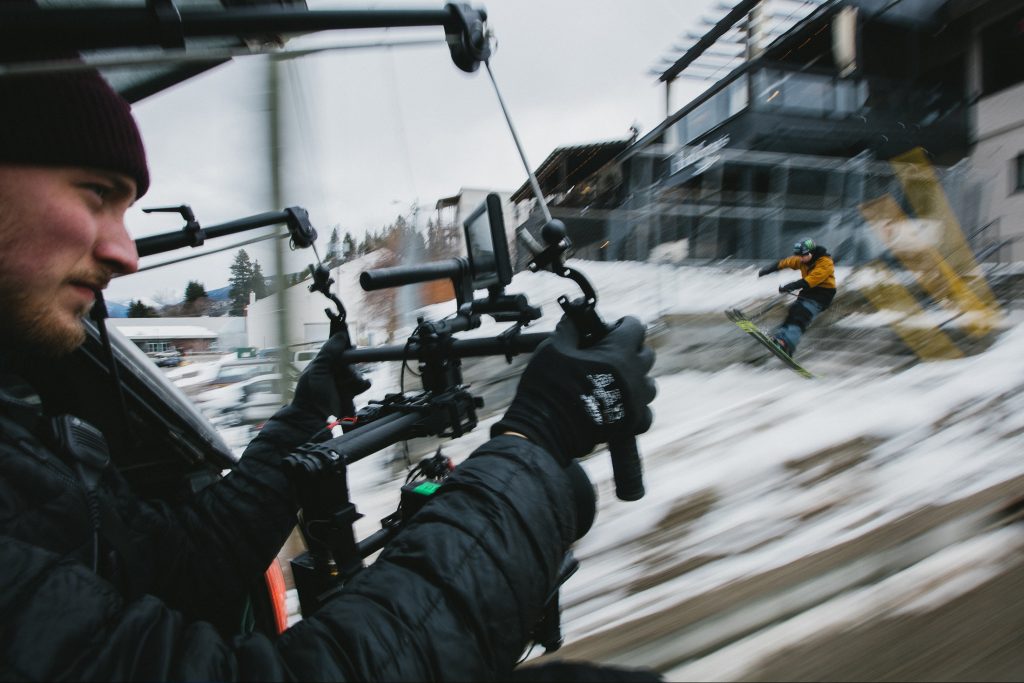
How’d the town feel about that?
Everyone was great about it. It’s this cool creative community, very supportive of action sports. It was a natural fit. I mean, just the fact that people let us ski on their rooftops and jump over their cars tells you how great they were. Looking back, I don’t think we could have pulled it off anywhere else.
You mentioned earlier how important story is. How do you make it feel authentic?
The story here is the relationship between the skier and the little boy. Most of it comes across in the details of their interactions: the subtle looks they give each other back and forth. We were lucky because the boy — Sequoia Colbeck — and Tom [Wallisch, the skier] became close. They developed a real friendship, which I think was important because this was Sequoia’s first acting gig. In a lot of the shots, he’s not acting. The looks they’re giving each other are authentic. I think that’s why people connect with this film so well: because of the real connection between the boy and the skier. It weirdly lets us relive that feeling of being a kid and dreaming about something really big and cool. I think that’s where this piece does really well. People have shed tears. We’re trying to create a real emotional response, which is very difficult to do in a short period of time. In this case, it works because it feels so real.
So the kid was just being himself most of the time? Or did he need specific direction?
Oh, no. We were all over him for sure. He responded well to it. Most of the direction was about toning things down. Don’t act too excited. Just give the audience those subtle hints of being surprised without going over the top. It doesn’t take much.
What about the parents? Were their lines scripted or was that all improvisational?
That was all improv. They are professional actors that we hired, and we gave them a lot of direction, obviously. But all of the specific dialogue was improvisational. We didn’t want it to feel scripted. We wanted it to feel as natural as possible. Lines like, “We should do something like that in the bathroom” — totally improv.
It makes sense you’d want a nature film to feel natural.
We like to tell stories that aren’t forced. That are just sort of there. Our goal is to get out of the way of the story and let it tell itself as much as possible. Then we try to support it with amazing imagery and a structure that’s not too complicated or trying too hard. We never want to look like we’re trying too hard even though, of course, we’re always trying our hardest. We’re always trying to make something better than the last time because we believe in this work so much. We think cinema that brings people closer to the natural world is extremely powerful and important. It doesn’t have to be complicated.
We’re drawn to simple, powerful storylines. For example, we’re working on a film right now for Thule about a guy, Apa Sherpa, who has climbed Mount Everest more than any other human. Twenty-one times! So we ask ourselves, How can we get out of the way of this amazing story and let the power of the story speak for itself? What we ended up doing was finding an 11-year-old boy who’s living a very similar life to the one Sherpa led 40 years ago. We followed this kid around in his life, all while telling the story of Apa Sherpa. So we look for devices like that. Or like a little boy in a car that allows you to connect to the experience. We want the story to be simple and powerful, but also interesting and cinematically beautiful. That’s ultimately what we’re after.
Photo credit: Jake Dyson / Sherpas Cinema















































































